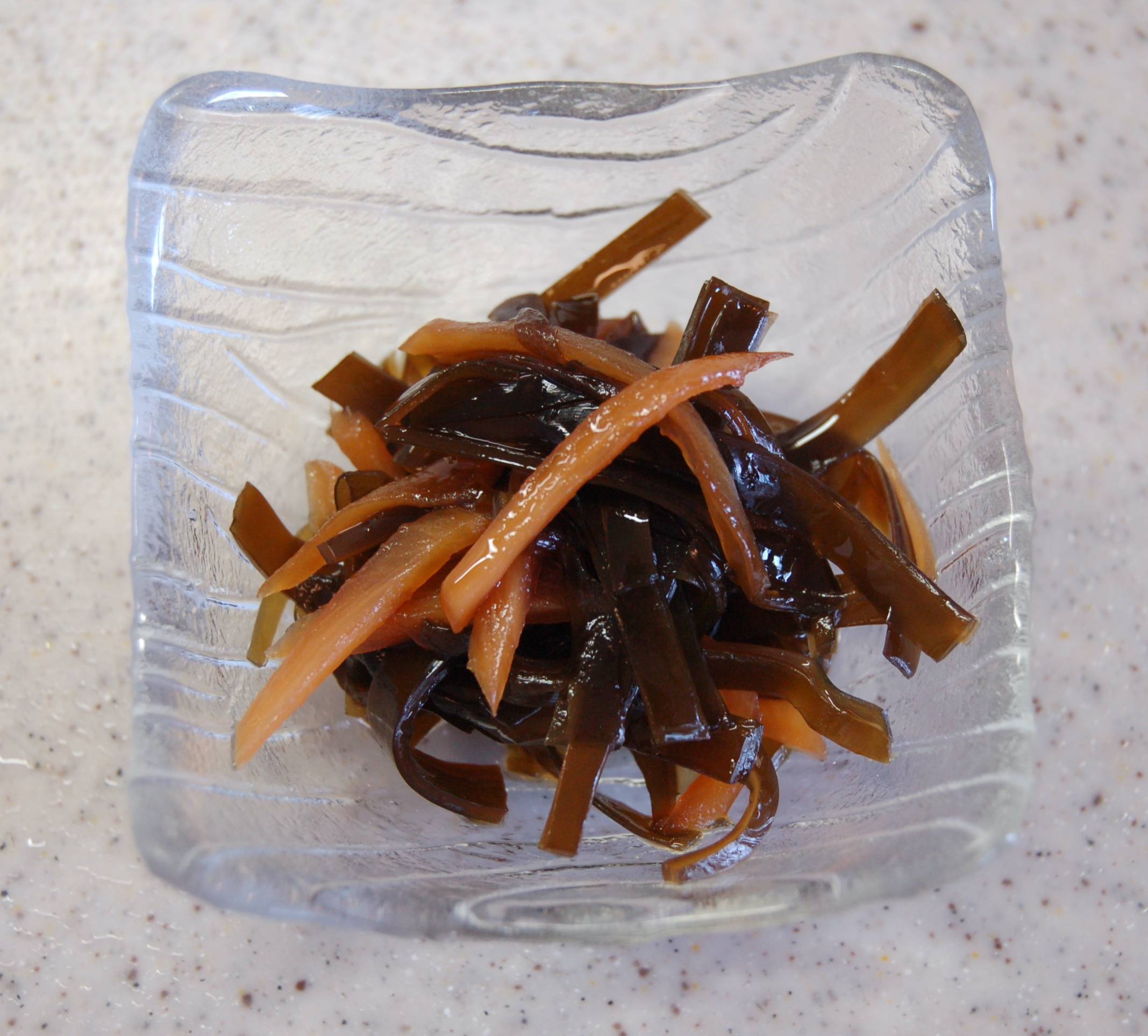During the Edo Period (1603-1868), the fish market serving the area now known as Tokyo was located in the waterside Tsukuda neighborhood. There, small, bruised fish and other seafood and vegetables with little or no commercial value were simmered in a mixture of soy sauce and mirin to delay spoilage. Huge vats of seasoned soy sauce became deeply flavored with each addition of salvaged seafood. When necessary, the mixture was thinned with water.
In the households of those who worked at the market, various kitchen scraps were repurposed by soy-stewing them into gohan no tomo (literally translated as “rice friends”; relishes to be served with rice). Reclaimed items prepared by soy-stewing came to be known as tsukudani, or “simmered in the manner of Tsukuda.” Tasty and inexpensive, tsukudani became a staple among the common people.
Hundreds of years later, tsukudani remain a mealtime favorite with a broad demographic. Though prepared tsukudani are bestsellers at convenience stores and supermarkets, I prefer to make my own additive-free versions in the spirit of old-fashioned frugality as well as modern-day sustainability. Once made, tsukudani keep for weeks in the refrigerator, ready to top a bowl of rice, stuff an onigiri or fill an empty spot in a bento. Tsukudani also make a great snack to have with beer or sake.


















With your current subscription plan you can comment on stories. However, before writing your first comment, please create a display name in the Profile section of your subscriber account page.